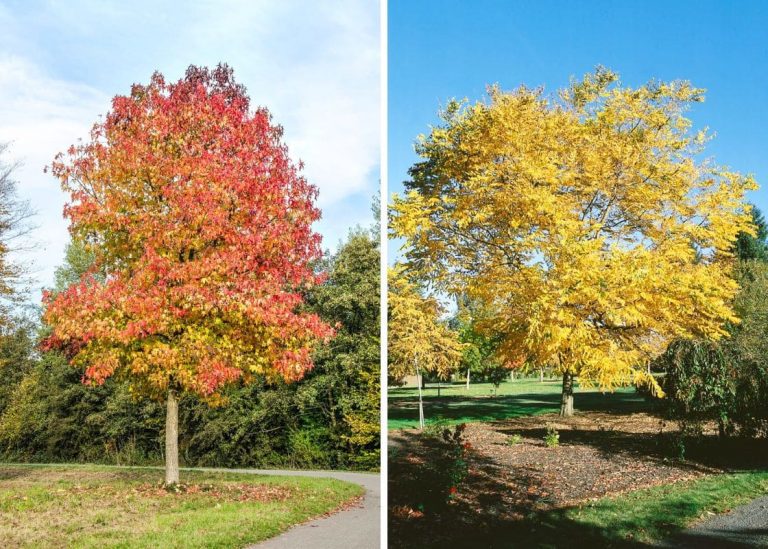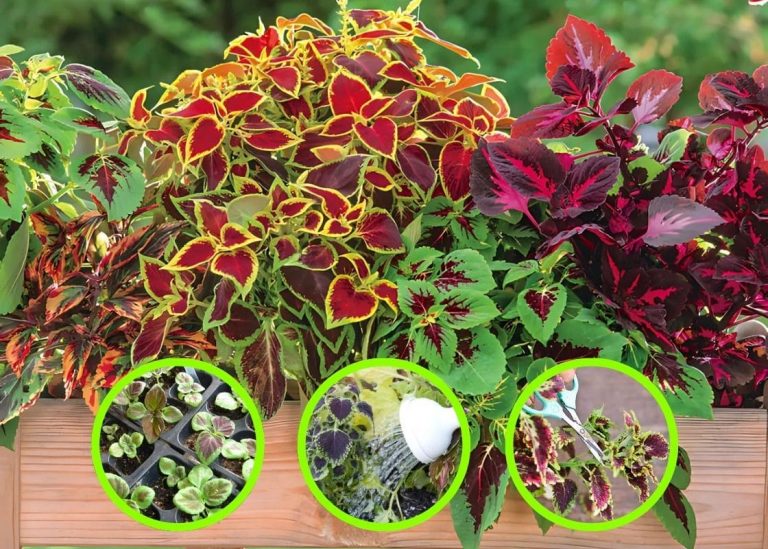How to Grow Pineapple at Home: Your Easy Guide to Sweet Success
It started with a single pineapple I bought at the market on a whim. Not the fruit—I mean the idea. I’d just returned from a beach trip where fresh pineapple was everywhere, and something about that golden, spiky crown sitting on my kitchen counter whispered, “Why not me?”
I remember twisting off the leafy top and feeling silly as I set it aside like it was a precious seed. I didn’t expect much. Maybe a sprout, if I was lucky. But weeks later, when I saw the first delicate roots emerging in a jar of water, I swear it felt like magic.
That was years ago, and I’ve grown several pineapples since. Some grew tall but never fruited. One stayed tiny. And one—oh, one gave me a fruit so sweet it tasted like sunshine and effort.
This little tropical adventure taught me patience, joy, and just how much wonder we can grow at home, even on a windowsill in winter. If you’ve ever been curious about growing your own pineapple, I’d love to walk you through it. This is the kind of garden story that begins with a twist—and ends with a taste.
Choosing the Perfect Pineapple for Planting
The first time I bought a pineapple for planting, I didn’t choose wisely. I picked the prettiest one—golden and fragrant—but ignored the fact that its crown was browning and dry at the edges. It rooted, barely, but never made it far.

A farmer at my local market later told me, “The life is in the leaves. If those are tired, the rest doesn’t matter.” That stuck with me.
What to Look For:
-
Healthy, vibrant green leaves (no dry tips or browning)
-
Firm fruit with no soft or mushy spots
-
Organic is ideal—less likely to have been chemically treated
Every pineapple you grow starts with a decision. Pick one that feels alive in your hands. Trust your gardener’s eye.
Preparing Your Pineapple Crown for Planting
I still remember the nervous twist of my very first pineapple crown. I thought I’d snap it wrong. But it came off clean, almost like the plant wanted to grow. That one twist started everything.
Once I got better at this, I added a little ritual: I’d hum while peeling the lower leaves, talk to the crown while it dried. It sounds silly, but it felt like setting intentions.
How I Prep My Pineapple Tops:
-
Twist off the leafy top from the fruit (it should snap cleanly).
-
Peel back 4–6 of the bottom leaves to expose about an inch of stem.
-
Let it dry on your counter for 2–3 days. This step prevents rot and gives the stem a callus for rooting.
It looks strange sitting there bare and leafy, but trust the process. I call this the pineapple’s “rest and reset” period.
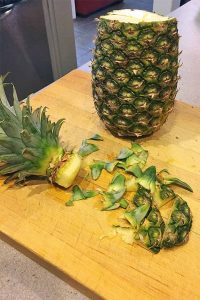
Rooting Your Pineapple Crown
Here’s where things get magical. One summer, my son watched a pineapple crown sit in water for three weeks. Nothing happened. He called it “lazy.” Then one morning, we spotted white roots unfurling like tiny threads. “Look,” I said, “it’s waking up.”
That’s what this phase feels like—gentle awakening.
Water Method (Perfect for Beginners):
-
Place the crown in a jar so only the bare stem touches water
-
Keep the leaves dry
-
Change the water every 2–3 days
-
Set it in bright, indirect light
Roots appear in 2–4 weeks. When they reach about 2 inches, your crown is ready for soil.
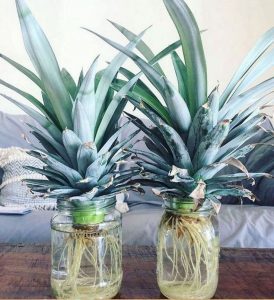
Soil Method (Slower but Solid):
-
Plant the dried crown in a small pot with well-draining soil
-
Water lightly and keep in a sunny window
-
Roots develop after 4–6 weeks
Sometimes I do both, just to compare. Both work. Both teach patience.
Planting Your Pineapple in a Pot
The first time I transferred my rooted crown into soil, I was weirdly nervous—like I was moving a baby into its crib. It’s a gentle process, and it feels good to give it space to stretch and grow.
Here’s How I Pot Mine:
-
Use an 8–12 inch pot with drainage holes
-
Fill with a mix of potting soil and coarse sand or perlite
-
Plant the crown so the leaves stay above soil level
-
Water gently until the soil is moist but not soaked
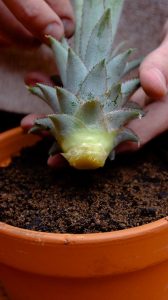
I always place it near a bright window, usually east-facing. That soft morning light seems to encourage new growth.
Caring for Your Pineapple Plant
One mistake I’ve made (more than once)? Overwatering. I used to water from love, not from need. But pineapples are tough. They don’t want to be babied—just respected.
One of my pineapple plants actually taught me restraint. Its leaves started yellowing, and I panicked. Turns out, soggy roots were the problem. I backed off. It recovered.
My Watering Rules:
-
Let the top inch of soil dry before watering
-
Water weekly or every 10 days depending on your climate
-
Always use pots with drainage
Sunlight Needs:
-
6–8 hours of bright, indirect sunlight daily
-
If light is weak in winter, use a grow light for support
If the leaves start stretching or leaning, your plant is whispering: “More light, please.”
Fertilizer: Feeding with Intention
I once fertilized too much, thinking more food meant faster fruit. My pineapple got big—but never blossomed. Lesson learned: pineapples need steady love, not fast fuel.
What I Use Now:
-
A mild liquid fertilizer (10-10-10) every 2–3 months
-
Organic compost tea during spring and summer
-
Seaweed or kelp spray every now and then for leaf health
You’re not feeding the plant just to grow—it’s about preparing it to bloom when it’s ready.
Patience Pays Off: When to Expect Fruit
There’s a quiet, almost sacred patience in growing pineapples. One winter, I had three plants growing in different corners of the house. They’d been with me for nearly two years. Then, in early spring, one of them started forming a reddish-purple flower in the center.
I can’t describe how beautiful that moment was. It felt like watching hope bloom.
What to Expect:
-
18–24 months before your plant flowers
-
A central spike with reddish-purple flowers
-
A small pineapple starts forming above the flower
-
It ripens in 5–6 months
Yes, it’s a long wait. But that golden fruit? It’s not just sweet—it’s earned.
Common Issues & Troubleshooting Tips
Here’s a confession: I’ve made almost every mistake you can. But each one taught me something. Here are the ones I see most often:
Brown Leaf Tips → Not enough humidity. Mist the leaves once a week, especially in dry homes.
Yellowing Leaves → Likely overwatering or poor drainage. Let the soil dry out and make sure your pot isn’t holding water.
Slow Growth or No Fruit → Often not enough sunlight. Move the plant to the brightest spot you have—or get a grow light.
Every plant is different. Listen. Adjust. Breathe. That’s how I’ve learned to grow, too.
Harvesting Your Pineapple

The day your pineapple turns golden, your heart will flutter—I promise. Mine did. It smelled like a summer morning and felt just soft enough to tell me it was ready.
Harvesting Steps:
-
Check for golden-yellow skin, slight give when pressed, and sweet aroma
-
Use a sharp knife to cut just above the base of the fruit
-
Leave a little stem attached
Then… slice it open, take a bite, and smile. You just grew tropical sunshine in a pot.
Final Thoughts: The Sweetest Things Grow Slowly
Growing pineapples has taught me more than just how to root a crown or mix soil. It’s taught me that care doesn’t have to be loud. That growth isn’t always visible. That the most rewarding fruits take their time.
And maybe that’s the point.
So, if you’re holding a pineapple and wondering if it’s worth it—if this funny little crown could really grow something—I’m here to tell you: absolutely. You’ll be surprised what can bloom from a bit of curiosity, a touch of effort, and a lot of heart.
Let’s trade stories—have you tried growing pineapples? Planning to start one now? I’d love to hear your journey in the comments. Until then, keep growing something sweet.



